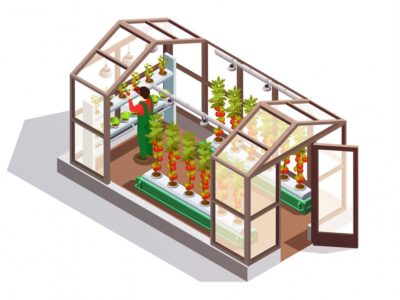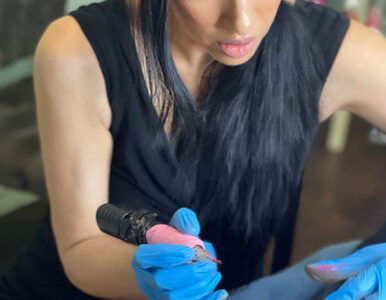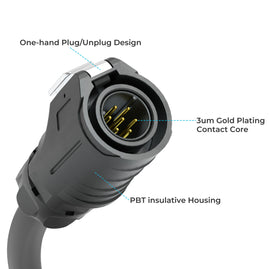Are you ready to take your fabric business online? You’ve chosen the perfect domain name, and now all you need to do is design a stunning website that shows off your products. If this is your first foray into web design, don’t worry! Here are nine essential tips for creating the perfect website for your fabric business. Whether selling fabric by the yard or making finished products from cloth, you’ll need an online presence to reach your customers. A well-designed website can set your business apart from the competition and help you attract new customers. This blog post will give you nine tips for designing a stunning website for your fabric business!
Choose a Stunning Template
The beauty of modern website builders is that you don’t need to be a coding whiz to create a beautiful website. Instead, choose from hundreds of stunning templates and customize them with colors and images that reflect your brand identity. Make sure to select a professional template that matches the tone of your fabric business and draws in customers. For example, if selling area rugs, use a template with plenty of space to show off images and product information.
Include Clear Product Shots
Don’t just provide descriptions of each product; instead, upload high-quality images so customers can get an up-close look at what they’re buying. Showcase each product in full color with multiple angles so customers can appreciate their beauty. If possible, include zoom features so customers can look closely at the details. For example, if selling outdoor cushions, take photos from different angles and have a close-up image of the fabric texture. For this, you should follow these steps:
- Choose an appropriate background for your products and ensure that it has a subtle color so the focus remains on the product itself.
- Make sure lighting is just right; too much or too little won’t do any good for the photo.
- Avoid using filters, and don’t over-saturate the colors when editing.
- Showcase different angles of the same product as it will give customers a better idea of what they are buying.
- Include relevant keywords and place them in titles, descriptions, file names, captions, etc., to help with SEO (Search Engine Optimization).
- Highlight customer reviews and ratings to give potential buyers more confidence in your product.
- Use videos or GIFs to demonstrate how the fabric looks in action and create a more interactive experience for customers.
Focus on User Experience
A great website isn’t just about looking pretty; it should also be easy to use and navigate through different pages quickly and effortlessly. Try out your website and ensure all the links work properly, as well as any contact forms or signup forms you might have included on specific pages. The easier visitors find what they’re looking for, the more likely they will stay on your site longer—and purchase something from you! For example, if you’re selling fabric furniture items, make sure customers can quickly and easily move from the product page to checkout. And don’t forget to provide detailed product descriptions and photos, so customers know exactly what they are buying.
Optimize for Mobile
Designing a mobile-friendly website is essential to providing an excellent customer experience. Over 60% of online traffic comes from mobile devices, so if your site isn’t optimized for them, visitors will have difficulty navigating and using it. Designers should test their websites on platforms such as tablets, smartphones, and laptops to ensure they are optimized for all devices. For example, they may need to adjust the size of text and images or rearrange items on the page.
Incorporate Quality Images
High-quality images can help showcase your products, create interest, and encourage visitors to purchase from you. Images should be sized correctly and have relevant descriptions easily readable by search engines. Additionally, don’t forget to optimize your images for faster loading times. For example, you can reduce the size of your images, compress them, and use caching techniques. And, if possible, avoid using stock photos. For this, follow these steps:
- Choose images that enhance your website’s look and feel and capture attention.
- Optimize your images for faster loading by formatting them correctly and compressing them.
- Use relevant descriptions with each image to make it easier for search engines to crawl your website.
- Avoid using stock photos, as they take away from the unique feel of your website.
- Include product descriptions and reviews to boost customers’ confidence in buying products from you. Product descriptions should include clear information on materials, construction techniques, measurements, etc.

Fabric Business
Keep Your Pages Fresh
Your website should always have updated content that engages visitors and keeps them coming back. Try posting a blog or adding new products regularly to keep your website fresh and current. This will help boost engagement, build trust with customers, and increase sales. Like if you sell Jute Rugs, have a blog section about how to use them in your home. Additionally, create content relevant to the fabric items you’re selling, such as tips and tricks for sewing or caring for fabric products. And don’t forget to create pages for every type of fabric product you sell, as this will make it easier for customers to find what they need.
Create a Unique User Experience
Your website should be designed in such a way that it’s easy for visitors to navigate and find the information they need. Think about how you want visitors to experience your site and ensure all design elements work together to create an enjoyable user experience. For example, consider including visually appealing animations and graphics to enhance the overall feel of your site. Additionally, use intuitive menus and buttons to guide visitors throughout your site easily. And don’t forget the importance of a great logo to represent your brand visually.
Monitor Your Site Performance
Finally, it’s important to monitor the performance of your website. Use analytics tools and review metrics such as page views, bounce rates, and time on site to track how well your website is performing. Once you know what areas need improvement, you can make modifications and adjustments to ensure your fabric website provides visitors with the best possible experience. For example, if users struggle to navigate certain pages, you can change the UI/UX or add more explanatory content.
Utilize SEO Strategies
Don’t forget about search engine optimization (SEO). When people search for specific fabrics or related items on Google, Bing, or Yahoo!, they should find your website near the top of their results page if you have optimized it correctly. This means including keywords within content throughout your site as well as making sure each page has unique meta descriptions that accurately describe its content in one sentence or less.. Try using SEO tools like Yoast SEO or All In One SEO Pack to ensure all aspects of SEO are taken care of correctly before publishing any new pages or blog posts on your site. For example, a website named RugKnots could use keywords such as “rugs,” “carpets,” and “fabric-based home decor” throughout their content. They also use blogs to post about specific topics related to their business and products, such as “5 Tips for Choosing the Perfect Rug for Your Home.” An interpreter with website links ensures visitors easily navigate the website.
Conclusion
With these nine tips in hand, you should be well-equipped to create an excellent website for your fabric business that looks beautiful, functions well, and helps drive traffic from organic search results too! Be sure to test out every link yourself before launching the final version of your site—your future customers will thank you for it! Comment below if you contain any questions or need further guidance in developing a website for your fabric business. Good luck!











Comments